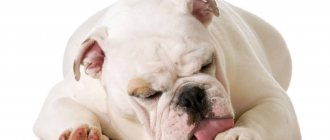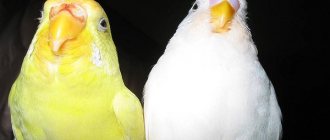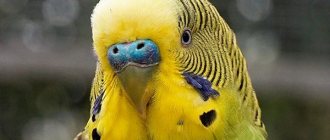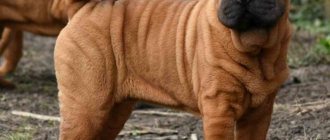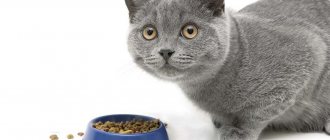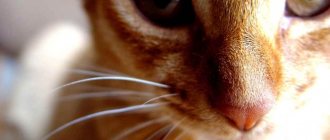Natural processes occurring in the body characterize the state of health. In this sense, parrot droppings play an important role in diagnosis. Anyone who cares for poultry will have to learn to recognize pet problems by the type of excrement. Therefore, you need to have an idea of stool frequency, texture and color of discharge. Let's talk about what a normal budgerigar litter looks like and how to determine whether there is a disease by the shade.
What litter is considered normal?
Normal droppings should be brown-green to dark brown in color and spiral shaped. In addition to the feces themselves, parrot feces also contain urine in the form of a transparent liquid fraction and solid urates of a white or yellowish tint. Small birds have a fast metabolism, so they eat a lot and defecate often - normally up to 40-50 times a day. The color and consistency of feces can vary depending on the bird's diet: if it is predominantly grain-based, the feces will be firmer and brown in color, and if the parrot eats a lot of fresh fruits and vegetables, the feces will be thinner and green in color.
Possible complications
Prolonged diarrhea prevents the absorption of beneficial nutrients supplied with feed. Diarrhea leads to dehydration, intoxication, severe weakness, and causes exhaustion.
Important! If your budgie has diarrhea and treatment is not started in time, an upset stomach can cause the death of your feathered friend. Diarrhea that lasts more than 24–38 hours is a great threat to both the health and life of a feathered pet. An ornithologist will tell you what can be done if a bird has an upset stomach.
If a parrot often goes to the toilet with liquid droppings, diarrhea depletes the bird's body and provokes functional system failures in the functioning of internal organs and systems. In addition, prolonged diarrhea causes the cloacal sphincter muscles to stretch, which can eventually fall out.
Inflammation of the cloaca
Any uncharacteristic symptoms or changes in behavior should alert owners and breeders of budgies. If you care about the life and health of your feathered friend, do not self-medicate. Consult your veterinarian. Uncontrolled use of medications can cause severe complications and consequences.
Why does a parrot have a certain color of droppings?
Feces may change color when your parrot is fed brightly colored foods, such as beets. In this case, there is no cause for concern. However, often the color and consistency of the droppings change when the parrot gets sick. Therefore, any deviations from the norm in the appearance of feces should alert the owner, even if the pet does not show other signs of illness.
Green
Dark green droppings are normal when feeding large quantities of greens, vegetables and fruits to your parrot. Bright green feces, especially in combination with a thinning consistency, are a sign of serious problems with the bird’s body. The reasons why a budgie has green droppings may be as follows:
- liver diseases;
- poisoning;
- parasitic infestations;
- goiter inflammation;
- avitaminosis.
If a parrot has green droppings consisting only of liquid urine, this indicates that the bird has been starving for a long time.
Yellow
If your parrot has yellow droppings, this indicates a liver problem. Also, feces acquire a yellowish color due to infestations of parasites - helminths and protozoa. A yellow tint to the droppings indicates the accumulation of toxins in the body, which is why feces often turn yellow when poisoned by poor-quality feed. In addition, yellowing of the feces may indicate a lack of vitamins in the parrot's body, in particular vitamin A.
White
If your parrot has white droppings, it could be a sign of stress. When birds are stressed, they drink more and eat less, causing fecal volume to decrease and urine volume to increase, and small amounts of feces may be unnoticeable among the white-colored urates. If fluid intake has not changed, grayish-white stool may indicate problems with the pancreas, such as pancreatitis and insufficient enzyme production. Also, feces turn white when there is an excess of calcium in the diet and arthritis in old birds.
Black
Black droppings in budgies are observed when there is bleeding in the upper gastrointestinal tract. Bleeding can occur due to injury when a bird swallows a foreign object, stomach ulcers, tumors and parasitic infestations. The blood that enters the stomach is digested, which leads to the appearance of dark stools. This condition is dangerous and, if left untreated, can lead to the rapid death of the parrot.
Dark brown
If the parrot has no other signs of illness, brown droppings are considered normal, especially when fed predominantly grain mixtures. If the pet begins to refuse food or, on the contrary, its appetite increases, activity decreases, and the feces become liquid or loose, dark brown in color, this indicates the presence of helminths in the intestines or a bacterial infection of the gastrointestinal tract.
With blood
A budgie droppings containing blood indicates bleeding in the lower gastrointestinal tract or cloaca. It can occur when the mucous membrane is injured by a swallowed foreign object, parasitic infestations, bacterial infections, poisoning, or tumors. Females often injure the cloaca while laying eggs. A single small amount of blood in the stool is not dangerous, but repeated stools with blood indicate serious damage and require treatment.
With water
Watery droppings appear in birds with polyuria. It can be caused by stress or feeding your pet large quantities of juicy fruits. In this case, the feces retain their normal color and shape, and the liquid fraction of urine increases in volume. With diarrhea, feces become liquefied, may change color, and acquire an unpleasant odor. Causes of diarrhea include bacterial infections of the gastrointestinal tract, protozoan infestations, and poisoning.
Symptoms
Experienced owners of pet parrots know that any atypical and seemingly “wrong” behavior of a bird is a warning factor, a possible signal of impending problems.
A chick suffering from diarrhea sometimes sits on a perch, but more often sinks to the bottom of the cage, assuming a tense, bent and mussed body position.
An upset stomach affects the behavior of the pet - the parrot falls into an apathetic, sleepy state, closes its eyes and does not respond to external stimuli. Sick birds also vomit and refuse to eat, showing an almost complete loss of appetite.
Systematic diarrhea disrupts external cleanliness and hygiene - the parrot's feathers become dirty, including from liquid droppings.
Treatment
If pathological deviations in the appearance of the litter are detected, you should seek help from a veterinarian as soon as possible. He will examine the bird, make a diagnosis and prescribe treatment. You should not independently draw conclusions about the reason for the change in the appearance of feces and give your pet any medications: this can harm the bird. The exception is the presence of blood in the droppings. Bleeding is dangerous, so to stop it, the parrot is given Dicynone (1 drop per 4 drops of water once a day). This drug can be given for no more than 3 days.
Diseases
As mentioned earlier, diarrhea is a symptom indicating the presence of a particular disease. Indigestion rarely occurs “on its own”, almost always as part of some pathology. At the same time, the owner is faced with an important task related to establishing the exact cause of the appearance of the corresponding symptoms.
An excessive number of disorders acquired by a parrot affects the condition of its esophagus. In order to begin competent and timely treatment, you need to establish the correct diagnosis.
Ascariasis
Ascariasis is a classic helminthic pathology caused by foreign pests that have entered the esophagus. You can understand that a parrot is suffering from diarrhea, which arose precisely from this disease, by the following symptoms:
- loose stools with frequent blood spots;
- complete or partial loss of appetite;
- poor hygiene, disheveled appearance;
- limbs and mucous membranes acquire light shades.
Aspergillosis
Aspergillosis is an extremely dangerous disease that can cause irreparable harm to a pet’s health. The presence of this pathology can be determined by the presence of the following symptoms:
- loose bloody stools;
- bluish tint to paws;
- seizures;
- elongated neck;
- regular sneezing with mucus discharge from the nasal openings;
- refusal of food and excessive fluid intake.
Inflammation of the peritoneum and intestines
Inflammation of the peritoneum and intestines is probably the most common cause of diarrhea. The presence of this pathology is determined by a swollen abdomen of a reddish hue. The copious bowel movements from which the parrot suffers take on dark and dark brown tones. An excessive number of disorders acquired by a parrot affects the condition of its esophagus.
Another visual sign of inflammation is the visibility of intestines through the pet's abdomen.
Gastroenteritis
Gastroenteritis is a disease associated with infection of the mucous membranes of the stomach and intestines. You can tell that a bird is suffering from such a pathology by frequent, excessively thin, foul-smelling and foaming yellow-green diarrhea. Another sign is a change in the pet’s mood - the bird is in constant apathy and does not react to external events.
Hepatitis or hepatosis
Hepatitis, as well as hepatosis, are particularly dangerous pathologies that can cause irreparable harm to the health of a feathered friend. The presence of diseases can be determined using symptoms:
- visually noticeable bloating;
- dark brown and brown stool;
- dermatitis.
Flu
Classic influenza is a serious illness with a high risk of all sorts of complications. The intensifying disease spreads to the internal organs, causing serious harm to the health of the pet. The presence of a sore can be determined by the corresponding symptoms:
- diarrhea;
- feverish condition;
- fever or chills;
- excessive mucus discharge from the nasal openings;
- frequent sneezing;
- swelling of the cervical region and head.
Cloacite
Cloacitis is a disease common in young individuals. Pathology is an inflammation that occurs in the area of the mucous membranes located inside and outside the cloaca. The main signs indicating the presence of such problems include:
- apathetic behavior;
- lack of response to external stimuli;
- loss of appetite;
- excessive and heavy drinking;
- clumping of feathers and a ruffled appearance;
- redness in the cloaca area.
Coccidiosis
Coccidiosis is a pathology that occurs as a result of damage to the body by all kinds of pathogenic bacteria, which are prokaryotes (protozoan microorganisms). An excessive number of disorders acquired by a parrot affects the condition of its esophagus. You can understand that a bird has become ill with coccidiosis by the list of reasons:
- diarrhea;
- stool takes on a greenish or brownish tint;
- discharge of blood during diarrhea;
- refusal of food;
- apathetic behavior;
- tousled look.
Colibacillosis
Colibacillosis is a disease with more than a dozen different forms. Loose and frequent stools are a symptom of an intestinal pathology. In addition to severe diarrhea, a parrot suffering from colibacillosis refuses to feed, loses thirst and suffers from inflammation in the joints.
The occurrence of various disorders in the area of defecation corresponds to the appearance of symptoms of various diseases.
Goiter obstruction
Goiter obstruction is probably the most “harmless” disease, often amenable to immediate treatment. An excessive number of disorders acquired by a parrot affects the condition of its esophagus. You can understand what the symptoms of goiter obstruction look like based on the following factors:
- refusal to feed;
- large and excessively hard goiter;
- frequent bowel movements;
- the appearance of shortness of breath;
- apathy, lack of reaction to external events;
- weight loss;
- undigested grain in feces;
- pungent odor from the mouth.
Gout
Gout is a pathology that occurs as a result of problems associated with protein metabolism disorders. Throughout the course of the disease, a large amount of uric acid salts are deposited in the pet’s body, which causes most of the subsequent symptoms:
- weight loss;
- lack of appetite;
- lameness and dishevelment;
- the joints are “decorated” with small yellow nodes;
- redness of the mucous membranes in the cloaca area.
Cold
Most colds manifest themselves as a result of weakened immunity or occasional drafts and drops in temperature. When such a pathology appears, the owners begin to think about the question of how to give the parrot medicine. In addition to loose stools, a bird with a cold suffers from symptoms such as:
- refusal of food;
- secretion of excessive mucus from the nasal openings;
- regular sneezes;
- increase in body temperature;
- neck stretching;
- shortness of breath resulting from frequent and prolonged opening of the beak.
Psittacosis
Psittacosis is a pathology that is extremely dangerous to the health of birds and even people. The incubation period of this disease lasts 10-14 days. A bird suffering from psittacosis loses sleep and appetite, plunges into apathy and suffers from rhinitis. The occurrence of various disorders in the area of defecation corresponds to the appearance of symptoms of various diseases.
Salmonellosis
Salmonellosis is another helminthic disease caused by the presence of foreign bacteria in the stomach and intestines of a pet. Symptoms are similar to aspergillosis:
- loose stools with frequent blood spots;
- complete or partial loss of appetite;
- poor hygiene, disheveled appearance;
- limbs and mucous membranes acquire light shades.
Surrounding the bird with warmth
A weakened bird needs to be warmed up. Fever and excessive fluid loss may cause your pet to shiver. To help him, install an infrared lamp or 60 W incandescent lamp on the roof of the cage.
Leave a small part of the space shaded in case your pet gets hot or wants to hide from the light. However, if there are signs of bleeding, heating your pet is strictly prohibited. These include red or black stool.
THE PARROT HAS LIQUID STOOL, WHAT TO DO
Trichomoniasis
Symptoms of trichomoniasis are : loss of appetite, depression of behavior, green diarrhea with a strong unpleasant odor. A sick chicken's eyes become inflamed, and yellow liquid is observed around the beak. The bird often sits with ruffled hair and lowered wings.
- Trichomoniasis
- Drugs for treatment: Metronidazole, Furazolidone, Nitazol.
- Prevention does not require vaccination.
- The disease is fatal to birds if left untreated.
- In order to combat the disease, disinfection is carried out.
How and with what to treat?
Treatment of diarrhea in chickens and adults can be carried out using medications and folk methods. If you notice diarrhea in laying hens, contact your veterinarian for recommendations on how to treat a sick bird at home. The optimal treatment regimen is selected individually and depends on the underlying cause. You should not treat diarrhea in chickens yourself using various tablets or medications. The specialist will select an effective treatment aimed at normalizing the general condition of the bird. Otherwise, uncontrolled treatment will only worsen the situation and can provoke serious complications.
If diarrhea is caused by poor quality feeding, it is necessary to adjust the bird's diet. In case of green diarrhea, if the chicken is walking on the grass, you should not let it go out for a while and remove green food from the diet. If stomach upset is caused by hypothermia, it is necessary to provide heating by placing the bird in a separate cage.
If a chicken is diarrhea, constantly drinks water, but refuses to feed, these are clear signs of gastritis. In this case, you can give chickens the yolk of a hard-boiled egg, mixing it with hemp grain. To normalize the condition, give the bird activated carbon, a little wood ash, any other sorbent, or enzyme agents.
Difficulty with bowel movements
Constipation in budgies is much less common than diarrhea. Constipation usually occurs due to feeding the bird poor quality food. Typically, this is food that has either expired or is of poor quality. Often these are some stale grains and foods that contain a lot of fat.
During constipation, the bird is in a depressed state. In most cases, she makes a plaintive squeak and beats her tail. A constipated pet's droppings are too dense a substance and are larger in volume than they were before the disease.
Treatment for constipation in a budgie begins with throwing out the previous food and buying new food. It should contain more than 2-4 percent flax seed.
After this, Vaseline or castor oil is dripped into the bird’s beak. To make this procedure more convenient, it is recommended to use a pipette. As for the number of drops, it is usually prescribed to instill 3-4 drops per day. It is advised to take a pipette or syringe (without a needle) and inject a little Vaseline or castor oil into the parrot's cloaca.
If all else fails, consult a veterinarian. In general, if possible, contact a specialist immediately. Sometimes only an examination by a qualified doctor and test results can suggest an accurate diagnosis, based on which the correct treatment will be prescribed.
Causes of diarrhea (diarrhea) in chickens
Among the most common reasons that cause changes in droppings and diarrhea in chickens, farmers identify:
- Consumption of low-quality food occurs when purchasing food with an expired expiration date or poor storage technology. As a result of this, pathogenic and fungal microorganisms develop in it, which are difficult to diagnose by visual inspection, but cause an immediate reaction when they enter the animal’s body.
Important! External manifestations in this case may be the appearance of vomiting, convulsions and general weakness in chickens associated with intoxication of the body.
- Changing the diet of chickens can also cause diarrhea, due to the disruption of the digestive process associated with a sudden change in the type of feed. Externally, the impact of this factor is manifested in the presence of undigested food residues on the surface of feces.
- heavy metals gets into the feed occurs as a result of storing feed in containers made of zinc and copper that are not intended for this purpose.
Note! Among the not very common causes of pathology, experts call spring vitamin deficiency; to eliminate the deviation, it is enough to introduce complexes based on vitamins and minerals into the chickens’ diet.
- Stool pathologies in birds can be caused by a disorder of the respiratory system associated with poisoning when spraying certain aerosols or prolonged inhalation of air filled with tobacco smoke.
- Disturbances diagnosed in litter also occur when drinking bowls are improperly organized , sanitary measures are not carried out in a timely manner, which leads to stagnation of fluid and the creation of favorable conditions for the development of pathogenic microflora.
Adjusting your diet
During treatment, dry grain mixture, greens, fruits, fatty seeds and nuts, treats, and cottage cheese are excluded from the diet. After recovery, the old food should be replaced with a new pack.
While the bird is unwell, it may refuse to eat. The exhaustion of the bird will quickly end in its death if you do not force feed it from a syringe. To do this, use boiled buckwheat, rice, millet porridge or a mixture for chicks.
If your pet does not allow you to give him food or spits it out, you can insert part of the tube from the injection catheter into the parrot's crop and inject food through it. The device comes in different diameters. For wavy catheters, a pediatric butterfly catheter is used.
Stress
A parrot's stress can also cause both relatively harmless polyuria and more severe digestive disorders.
When a pet is frightened or very anxious, the adrenal glands release the steroid hormone cortisol, which affects almost all systems of the body. Its accumulation during prolonged or frequent stress leads to disruption of vital organs, including the intestines.
Stress affects your budgie's stool
